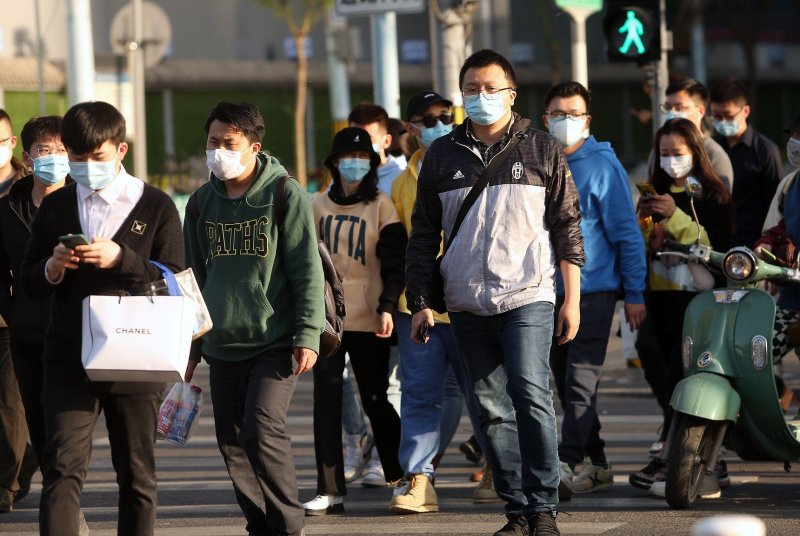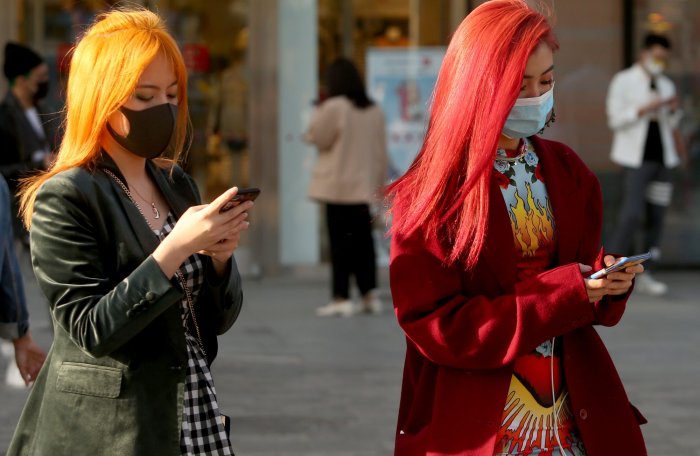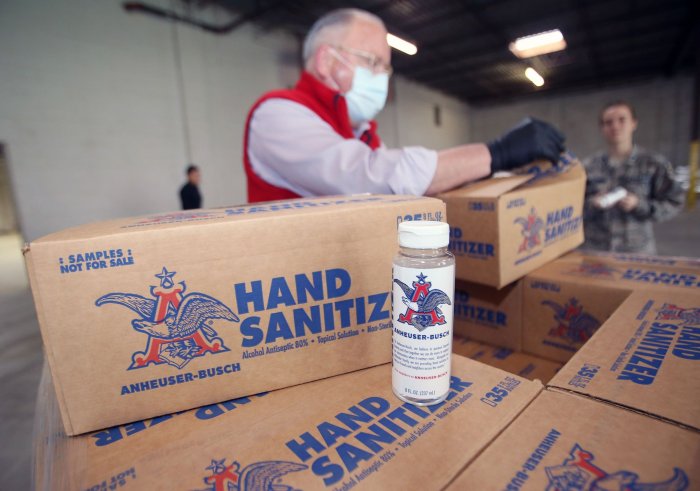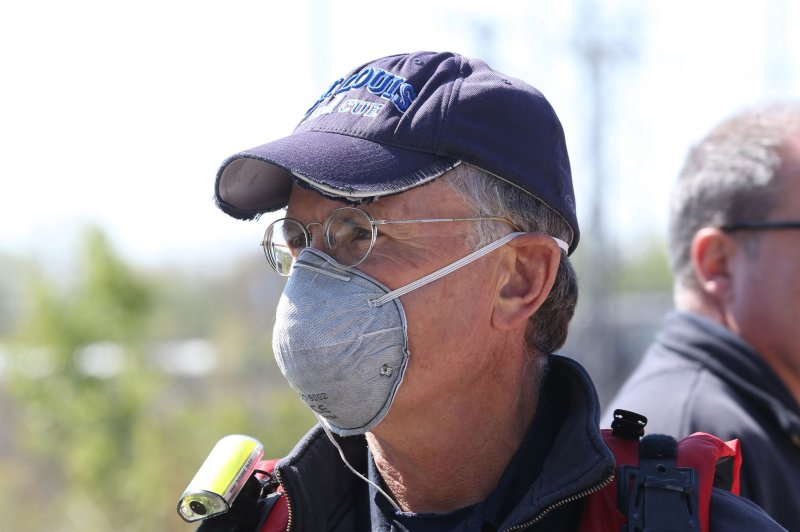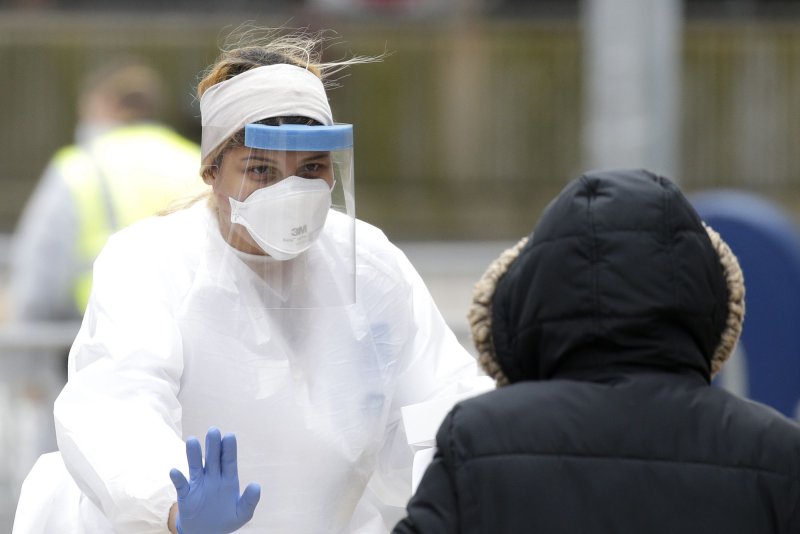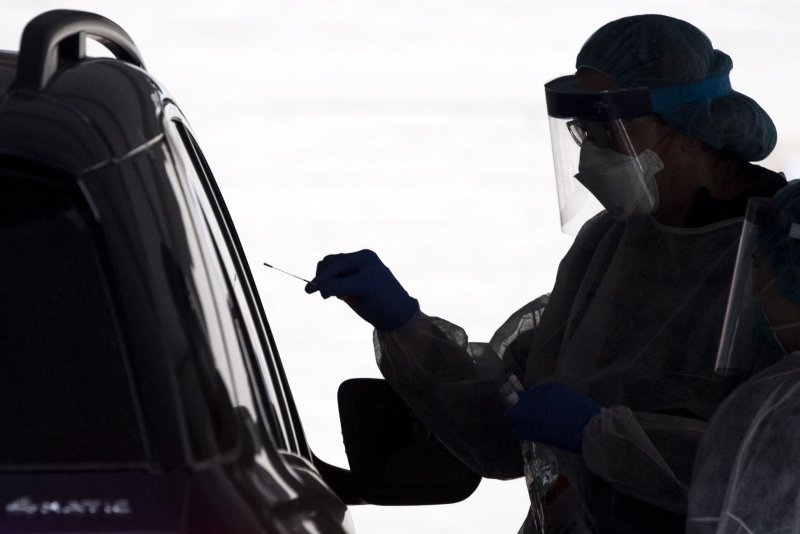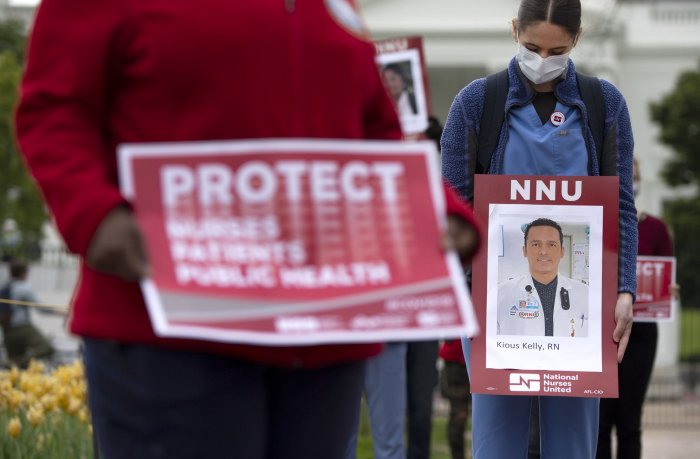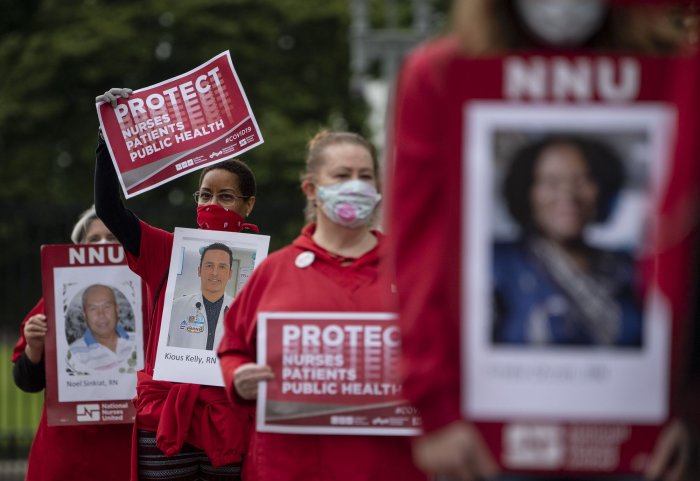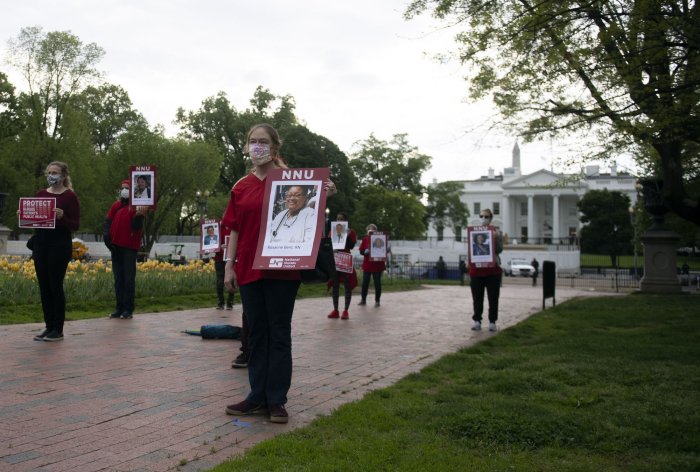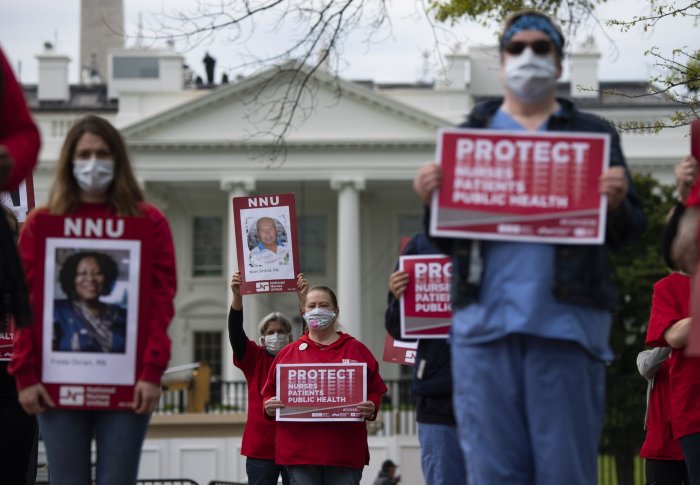‘Listen… and take action’: In front of White House, nurses read names of colleagues who have died from Covid-19
April 21, 2020 By Jake Johnson, Common Dreams

“We are here because our colleagues are dying. I think that right now people think of us as heroes, but we’re feeling like martyrs. We’re feeling like we’re being left on the battlefield with nothing.”
Dozens of nurses gathered outside the White House Tuesday and—while wearing face masks and adhering to social distancing guidelines—read aloud the names of 50 fellow healthcare workers who have died of Covid-19 in an effort to pressure Congress and President Donald Trump to provide frontline workers with adequate protective equipment.
“We’re tired of being treated as if we are expendable.”
—Deborah Burger, National Nurses United
“We’re demanding that the Trump administration and the U.S. Congress listen to these names, all dedicated nurses who have left families, friends, and colleagues behind,” said Melody Jones, a member of National Nurses United (NNU), the union that organized the demonstration. “Listen to their names and take action.”
“Let us remember and honor the ultimate sacrifice these nurses paid, mourn their passing, and recommit ourselves to fight like hell for the living,” said Jones.
This morning nurses protested for PPE – in front of the White House.
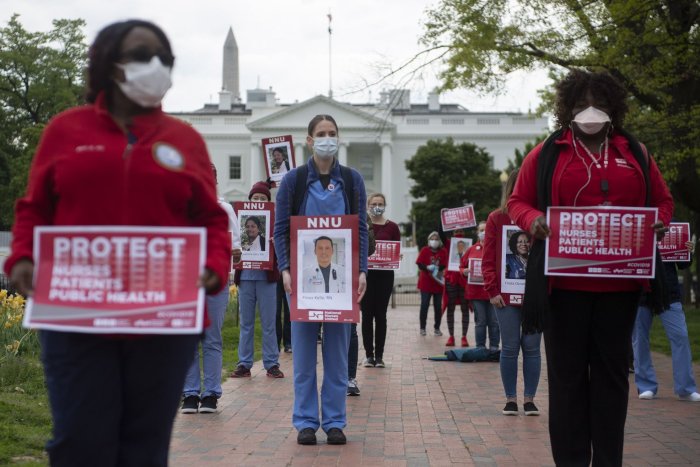
They read the names of healthcare workers who have given their lives trying to save others from COVID-19.
And the list felt endless.
This situation is unacceptable. We need to support our nurses. Now. pic.twitter.com/jKl4JpKP3L
— Joshua Potash (@JoshuaPotash) April 21, 2020
Rest of the segment where nurses read names, first vid is incomplete: pic.twitter.com/svyQPrB571
— Joshua Potash (@JoshuaPotash) April 21, 2020
NNU, the largest nurses union in the U.S., has for weeks been urging the Occupational Safety and Health Administration (OSHA) to enact an emergency temporary standard to ensure that all healthcare workers have the protective equipment they need to do their essential jobs safely. The Labor Department agency has thus far refused to act on the nurses’ demand.
“We are here because our colleagues are dying,” one nurse who participated in Tuesday’s demonstration told MSNBC. “I think that right now people think of us as heroes, but we’re feeling like martyrs. We’re feeling like we’re being left on the battlefield with nothing.”

Nurses hold a protest at the White House to call attention to healthcare workers nationwide who have been infected with COVID-19 and demanding the Trump administration provide more protective gear. Photo by Kevin Dietsch/UPI | License Photo
An analysis released last week by the Centers for Disease Control and Prevention found that more than 9,200 healthcare workers have tested positive for the novel coronavirus as of April 9. The CDC acknowledged that the number “is likely an underestimation.”
“We’re tired of being treated as if we are expendable,” NNU president Deborah Burger told the Washington Post. “If we are killed in this pandemic, there won’t be anybody to take care of the rest of the sick people that are going to come.”
“Everybody says they love nurses, they want to protect us,” said Burger, “but we still don’t have the safety gear that we need.”
Watch the demonstration:
Nurses protest in front of White House
The National Nurses United union protested at the White House on Tuesday calling for President Donald Trump to invoke the Defense Production Act to produce more PPEs, including N95 masks.
Nurses hold photos of fellow healthcare workers who have died from COVID-19. Photo by Kevin Dietsch/UPI | License Photo
Nurses protest for protective equipment at White House
April 21 (UPI) -- Nurses protested Tuesday at the White House to demand President Donald Trump use the Defense Production Act to produce personal protective equipment in response to COVID-19.
The nurses are members of National Nurses United, the largest nurses union in the United States.
While practicing social distancing, they read aloud the names of U.S. nurses who have died of COVID-19.
The protest aims "to call attention to the tens of thousands of health care workers nationwide who have become infected with COVID-19 due to lack of personal protective equipment," the union said in the statement.
In response, nurses have been demanding that "Trump use his authority under the Defense Production Act to order the mass production of PPE, including N95 respirators, face shields, gowns, gloves and shoe coverings, as well as ventilators and COVID-19 testing kits," the union said. "NNU is calling on Congress to mandate the DPA's use to produce the equipment and supplies health care workers need to care for COVID-19 patients as well as to conduct mass testing that is required to control the spread of the virus."
Trump invoked the DPA in late March to push General Motors to produce ventilators and has also used it more recently for COVID-19 testing swabs, but he has urged hospitals and states to take the lead in getting other supplies.
The NNU petitioned the Trump administration's Occupational Safety and Health Administration in early March for an emergency temporary standard to provide healthcare workers "optimal PPE," the union added, but never received a response.
RELATED N.Y. nurses sue state, hospitals for 'inadequate' coronavirus protections
"With no federal health and safety standard, nurses and other health care workers in many hospitals across the country have not been provided with adequate PPE to protect them from exposure to the virus," the union statement said.
Now, "the NNU is demanding Congress include a mandatory OSHA emergency standard in its next COVID-19 legislative package," the union statement said.

